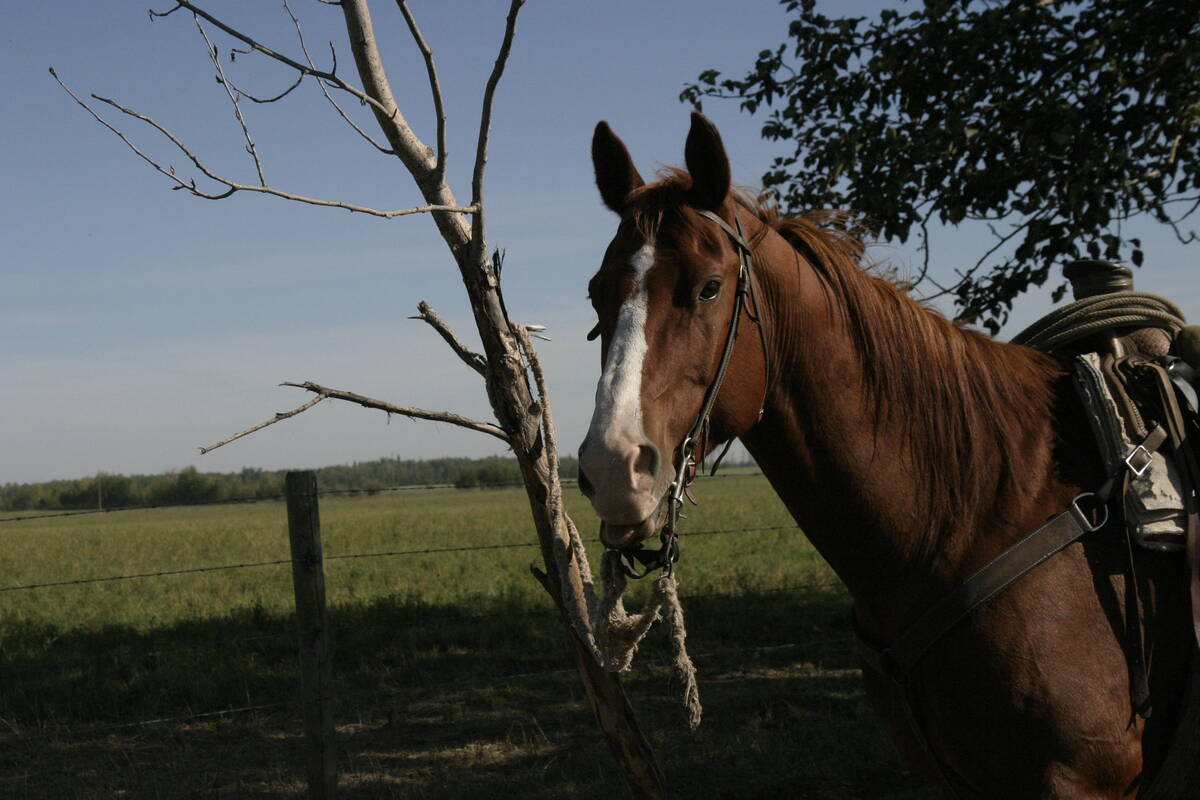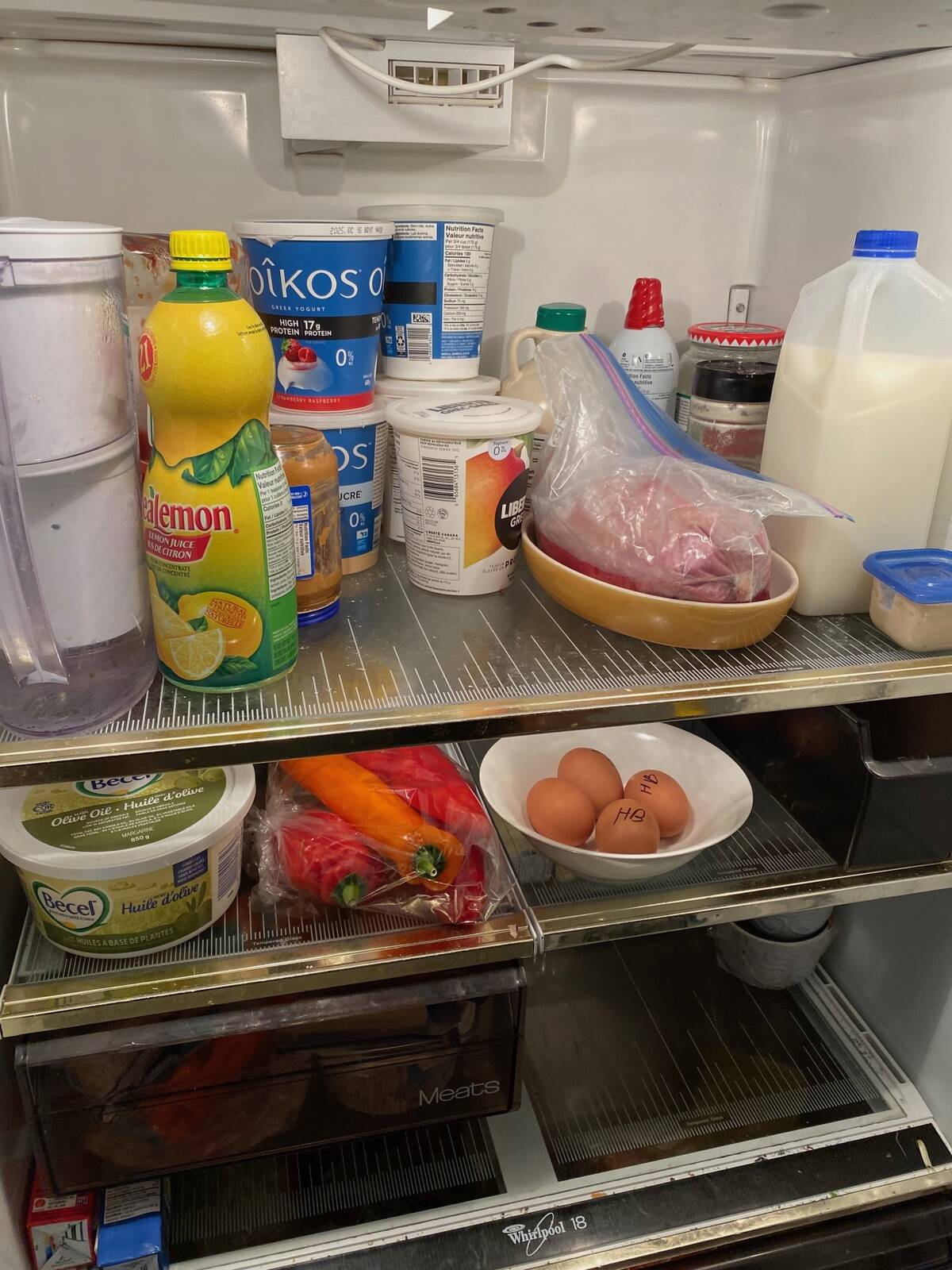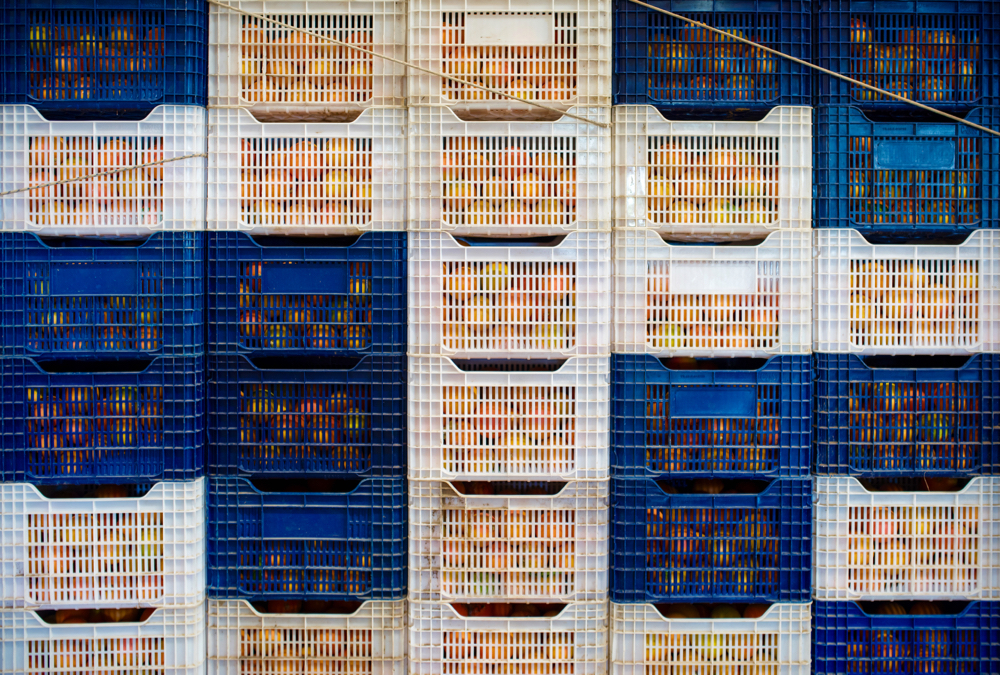It was another sad day at our house last week. We officially ran out of food.
I don’t know how this could happen. The pension cheques seemed to be coming in regularly.
Mind you that is my take on the situation. My wife, however, is inclined to put another spin on things. She describes it in one of two ways. 1. I went to the fridge or cupboard and couldn’t find one of my favorite foods, but I didn’t look very hard, or 2. We did in fact run out of one of my favourite foods — perhaps cheese, cold meat, Coke Zero — but she says the items are apparently on some mythical shopping list and she will be going to the store “soon”. Soon is pretty subjective. Does that mean within a day or so, or is she thinking in geological terms?
Read Also

Weekend warrior horses at risk
Horses need steady, rhythmic movement. Going from no activity to weekend bursts of exercise risks physical strain and injury.
She has this oddball thinking that likes to see bare self-space in the refrigerator. “I like to see things get used up,” she says. Her thinking continues: ”You get too much stuff, too many leftovers, too many half-used jars of condiments and things get lost. Food gets pushed to the back and we lose track of it. Then one day it’s found but you have to throw it out.” Apparently, she thinks the same thing can happen in the pantry, although as far as I know most canned goods have a life span similar to nuclear waste.
But planning or welcoming bare shelves in the refrigerator? I don’t know. That to me is a very slippery slope, which could lead to disaster — like a moment of hunger.
Social media perpetuates bare shelves in a fridge. Have you ever watched a cooking show on TV or just one of those five minute reels on Facebook, where a chef is preparing something that needs to chill for an hour or marinate over night. They open the fridge and there is one item on a shelf. A bottle or sparkly water perhaps. You could hang half a beef in there. Of course there is room to let something chill, marinate or thaw, that isn’t a real-world refrigerator. A real-world refrigerator is one where you open the door and can barely see the interior light bulbs at the back. Now that is well stocked.
I also get a kick out of the annual or semi-annual recommendation to let a frozen turkey thaw in the refrigerator. Ya right! Where do you find space for a 20-pound ball of ice, that probably needs a week to thaw? There is barely room in there for another jar of pickles. What do you do with all the essential day-to-day stuff that will be displaced? Do you buy a second fridge?
Yes, you have to be somewhat smart about it. You don’t want put the frozen turkey over a heat register for a couple days. That wouldn’t be good. However, I’ve found that putting the frozen bird inside a picnic cooler for two or three days, and then into cold water that’s replaced regularly for a couple more days, generally does the trick. Then the bird has to be cooked to the proper temperature, until it registers done/cooked through. That system has so far worked well over the years. We haven’t lost anyone yet in the days following a holiday meal, other than from natural causes.
And don’t get me started on people who live in fear of best before dates (BBD)! I’m not among that crowd, however I know some people (family) who are. Whether it is a dry or canned goods from the pantry or something perishable in the fridge — they immediately check the expiry or best before date. And if it is expired by a month or a few days, there is no way they are eating it. They totally disregard fact-based advice that those dates are just suggestions, and have more to do with marketing than food safety. Some people refuse to give in.
I’m always glad to test the limits of food quality. Milk for example can still be good 10 or 12 days past its BBD. And most condiments I find can still taste fine months after their BBD. For most stuff, my guide involves a combination of eyeball and smell tests. If it looks good and smells good, that’s all I need to know.
Some foods I do check more carefully — cold meats for one. It doesn’t take them long to go off color, get a little slimy, and the smell isn’t good. Some breads even after two or three days of sitting in a plastic bag on the counter can develop patches of mould. Nothing worse than biting into a great sandwich and tasting mould, says the voice of experience. Cheese however, that’s a different story. If I have a block of cheese that’s been wrapped up for a while, it can begin to develop patches of mould. But if I carefully trim those edges, the rest is good as new.
I do have some limits regarding food safety. There was a can of pie filling at the back of the pantry apparently that had a 2019 Best Before Date. It was probably fine, but it was also pointed out that I really didn’t need to be eating pie anyway. And there was half a bottle of hot sauce in the refrigerator, getting pretty dry, taking up valuable space in the door, that I remember buying about the time of the great Sriracha pepper crop failure of 1908. I let it go, too.
I’m hoping any bare spots in the refrigerator are soon occupied. My wife is promising to make a trip to the store … soon … we’ll see. Hopefully she’s not waiting for the stagecoach from Dodge to arrive with supplies. I must say, her track record is pretty good. She’s been following the same shopping routine for close to 50 years. But there is always the first time. What if she has a senior’s moment? Suppose it takes two or three days to get restocked?
As a last resort, I could make my way to the overstuffed chest freezer, thaw food and make something for myself. However, at the moment that seems like a very drastic measure, that most likely will require some effort. I’ll try to be patient.















